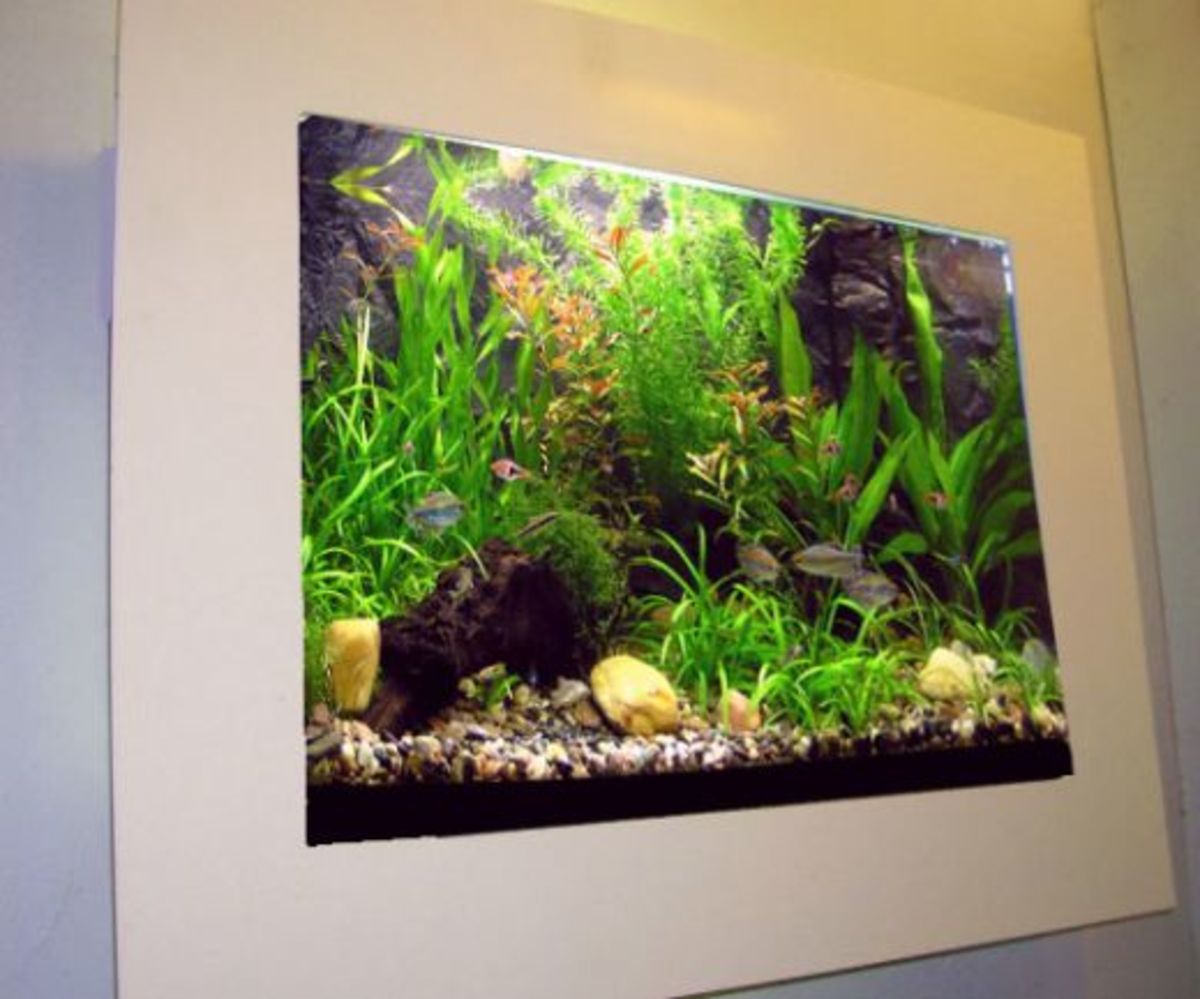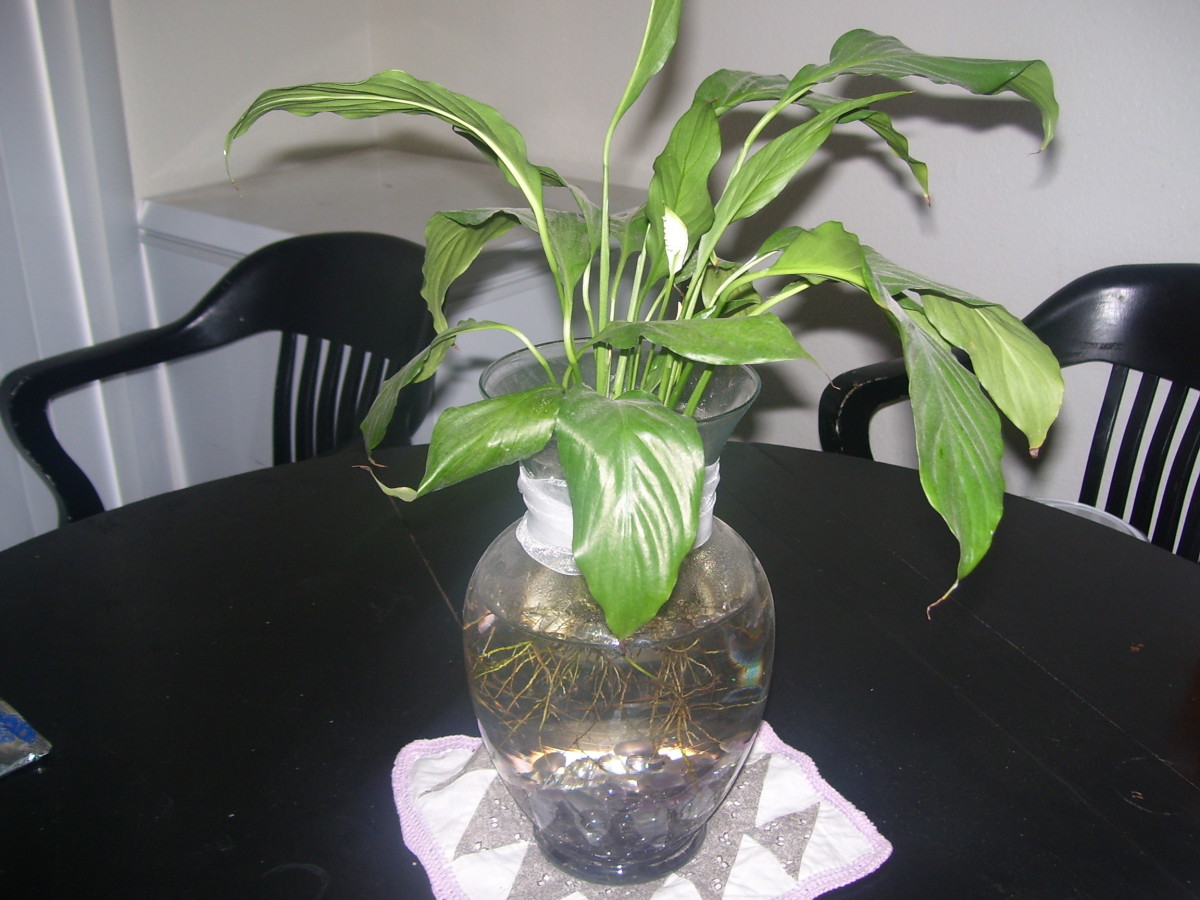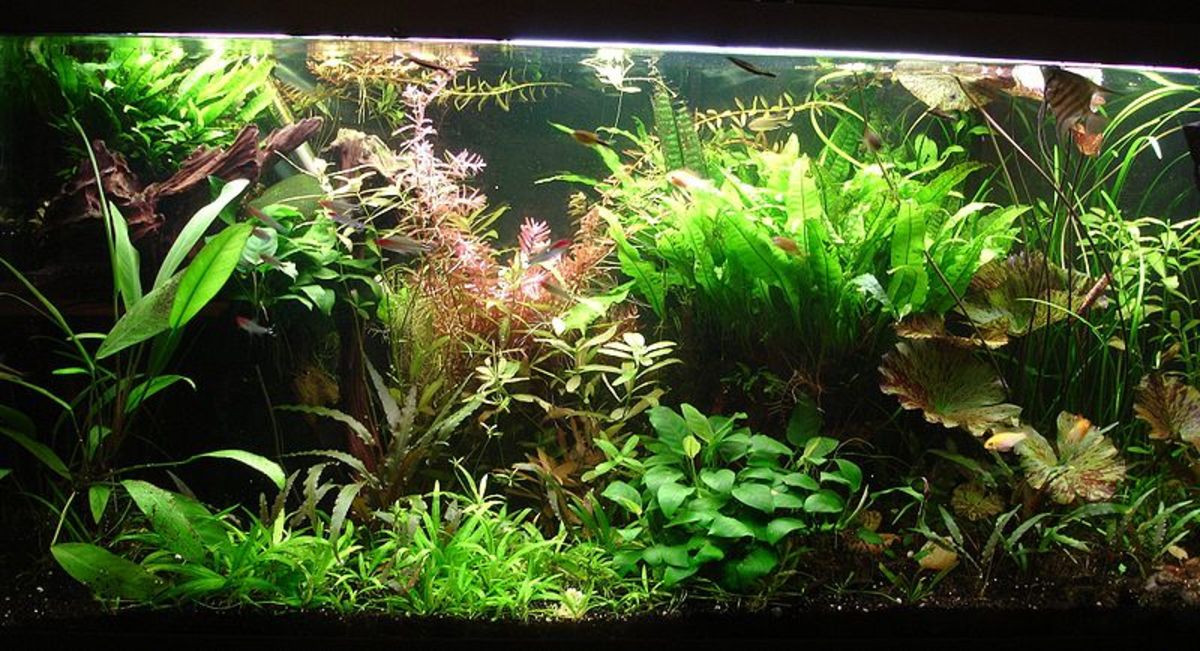How to Set Up a Freshwater Aquarium
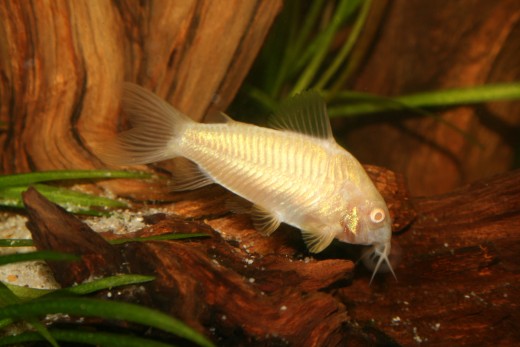
You’re just starting learning the fishkeeping hobby, and want to know all the essentials. Responsible fishkeeping starts with researching all of the needs of your prospective pet before making a purchase – beginning with proper setup and cycling for your aquarium after you have selected the tank to suit your needs. Read on for a simple step-by-step that will show you how to get your new aquarium up and running to be ready and healthful for your fish.
Select a surface for your aquarium. This needs to be sturdy and level, capable of holding about 15 pounds for every gallon of aquarium capacity. For instance, if you have an aquarium with a 30-gallon capacity, assume that it will weigh about 450 pounds once it has decorations, substrate, necessary equipment and water.
Always make sure to set up the aquarium where it’s going to stay before you put anything in it. Having any weight inside the aquarium during a move runs a big risk that the bottom will crack or break. The surface can be a commercial aquarium stand, sturdy furniture or homemade aquarium stands. Never use anything that you’re not certain will hold up to the weight of the aquarium, as the results can be disastrous to both your home and fish.
If you don't already have a stand with weight capacity that you're sure of, a stand like the one to the right works wonderfully. There are more decorative closed-cabinet stands available if you want it to be a more aesthetic addition to your home. Alternatively, save a bit of money with a single sturdy stand without shelves, but a little space for food, aerators, etc. is a big plus.
Set up base support. While it’s not absolutely necessary, many aquarists prefer to place sheets of Styrofoam or other means of support under the aquarium inside the outside edges. This just helps give the aquarium a little extra support and stability, further reducing the risk of stress fractures or leaks. Place the aquarium on the stand, making sure that the edges and corners are all firmly on the stand.
Give your fish high-quality filtration

Place the equipment. If you have an undergravel filter, place it in the tank now. Do some research if you haven't already bought a filter and find the one that works best for your intended setup -- hang-on-back or HOB filters are generally the most popular for community tanks. Put the substrate you’ve chosen into the tank. There are several choices available with various benefits and overall appearance, but the most popular and readily-available usually include gravel, sand, or crushed coral.
Next, arrange any decorations in the approximate location where you’d like them – they may be knocked out of place a little bit when you fill the tank. Pick items that are intended specifically for aquariums and that are appropriate for your intended fish. For instance, lacy fake plants may suffer damage at the hands...er, fins?...of some barbs or other semi-aggressive fish. Fish with flowing tails like bettas may sustain fin damage from protruding plastic of any type.
Put the heater and filter in place, as well as an aerator if needed, but leave them unplugged for now.
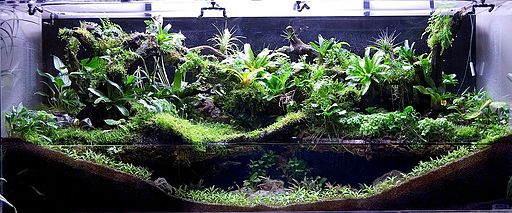
Fill the tank. You don’t have to worry about the temperature of the water yet unless you have live aquatic plants, since there won’t be any fish going into the tank for a while. Fill to your desired depth. Most aquarists prefer to fill the tank until the water line is just hidden by the top trim, though you may want less water if you plan to have fish that jump or apple snails. Apple snails need a little space at the top from which to gather oxygen, and will only lay eggs if they have about four inches of space above the water line. Now you may plug in your equipment.
Trust dechlorination to the experts

Begin cycling. Condition the water with a good dechlorinator. Bear in mind that even if you have well water that does not contain chlorine, this conditioner is beneficial in neutralizing some heavy metals and other such substances that are potentially hazardous to your fish. Research the various cycling techniques to find the one that best suits you, and begin the process.
Check back every two or three days throughout cycling to adjust the heater. Toward the end of the cycle, you’ll also want to do regular water tests to see if the ammonia and nitrites are gone yet, and whether or not nitrates are showing to indicate the completed cycle.
When ammonia and nitrites are at zero and nitrate levels are above what they were when the aquarium is filled, you may begin adding fish. Read the articles linked below about stocking levels and how to safely fill your tank -- you can't just add them all at once. About 10 percent of your intended fish should be added at a time, with a 5-7 day interval between additions to allow the beneficial bacteria time to adjust. Add too quickly, and an ammonia spike may kill all your fish.
The beauty of a properly set up aquarium
I hope this hub has been helpful to you, and thank you for sticking with me to the end. Did I miss anything? Please feel free to leave a comment below with any additional questions, or with tips and tricks that have worked really well for you in the past. For more in-depth information on stocking, choosing fish and more, check out my other aquarium articles. Feel free to request additional fish profiles or other such information; I have extensive experience with freshwater fish and some with brackish fish, and love to help wherever possible.
- Aquarium Giants: Which Fish Get HUGE? Big Freshwater...
Large freshwater aquarium fish are often bought as juveniles by inexperienced owners of small aquariums. The result is that these oversized fish often suffer stunting and ill health due to improper housing. Which ones grow into big freshwater aquariu - Essential Equipment for a Freshwater Aquarium
There is a plethora of available equipment on the market for every imaginable kind of setup...so what do you actually need? By now you've selected your aquarium and should have a pretty good idea of... - Aquarium Stocking Levels
Stocking levels are critical in keeping a healthy aquarium. There are many other factors than just how many fish are in each tank, but there is a general rule of thumb of one inch of the adult size of a fish... - How To Safely Clean A Second Hand Fish Tank or Aquar...
So dirty, how to make it clean again? If you're anything like me, when you started out your new hobby life as an aquarist, you bought a second hand fish tank. Second hand fish tanks, assuming they don't leak,... - Basic Freshwater Aquarium Setup Tips
If you've decided to set up a freshwater aquarium, you want to consider some of the basic tips I'm about to outline below. First, you'll need to understand that with freshwater aquariums you can create a... - Aquarium Fish Breeding: How to Set Up a Spawning Tan...
Before setting out on a fish breeding program, it is worth deciding what you are aiming for. Are you interested in making some money? Do you want to develop a new strain of a fish? Is it just a challenge?

